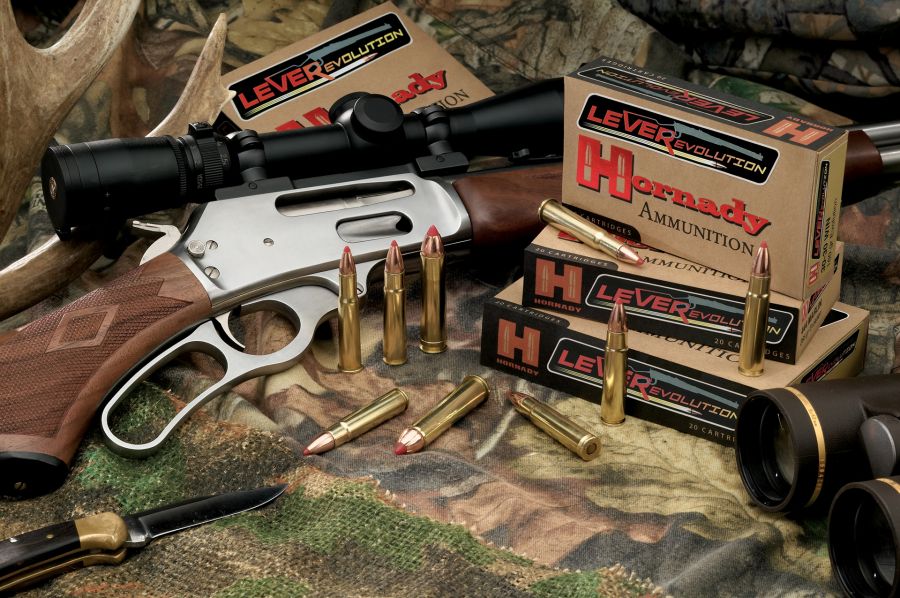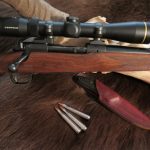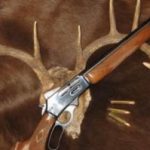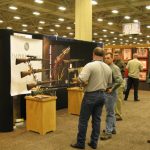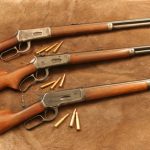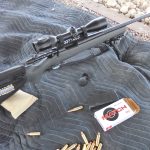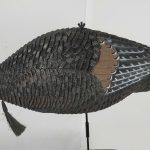Now more than ever, lever-action rifles are a great choice for big-game hunting.
Like a lot of kids, I grew up in the Northwest during a time when blue jeans were not a fashion statement and most everyone got a haircut once a week. The opening of big-game season was a big deal. When the first part of October rolled around and everyone headed for their favorite hunting grounds, most of the rifles that came off the gun racks were lever actions. Models and calibers varied, but most of the rifles were Winchesters or Marlins.
To the farmers and ranchers, they were just a reliable tool, just like a shovel or rake. They stood in the corner of the porch or hung on a peg in the barn most of the year so they were easy to get to in case some varmint started bothering the livestock or digging holes in the field. I can even remember seeing a few that were painted black so they wouldn’t rust.
It does make you wonder why the lever gun was the rifle of choice over the more modern scope-sighted bolt-action rifles. When you stop to think, it makes sense. The typical lever rifle is a bit shorter and lighter than a bolt rifle. Little maintenance is required to keep it in working order. A lever rifle is designed so that if it is dropped in the mud or dirt all that is needed is a slosh in the creek or a hit with an air hose to keep it operational. The thin profile makes it a natural to fit in a saddle scabbard or hang against a wall, and you can stuff a half dozen rounds in the magazine so in most cases you don’t have to carry extra rounds in your pocket.
And in those days, if you were blessed by being left-handed, the selection of good hunting rifles was very limited–except for the ambidextrous lever gun, which didn’t care which side of the stock you put your cheek.
When Savage discontinued the popular Model 99 a couple of years ago and when Winchester announced this winter that there would be no more Model 94s, some people thought the lever gun was going to fade into obscurity. Nothing could be further from the truth. These guns have been around since the end of the Civil War and they aren’t going away any time soon.
One activity that will ensure the longevity of the lever rifle is the popularity of Cowboy Action shooting. The rifle portion of this fast-growing sport is almost exclusively lever guns. What could be more fun than dressing up like Wild Bill or Calamity Jane and banging away at steel gongs from the back of a wooden horse or behind a hay bale? There is so much interest in this sport that Marlin and other manufacturers and importers are producing rifles specifically for the Cowboy Action shooters that are chambered for the old cartridges and feature long octagonal barrels, buckhorn sights, and crescent bull plates. Ammunition manufacturers such as Black Hills, Winchester, Ultramax, and others are making ammunition specifically for Cowboy Action shooters with lead bullet loads that are ballistically equal to the original factory loads from a hundred-plus years ago. That has given new life to old cartridges such as the .38-40, .44 Russian, and .45 Schofield, not to mention the .45 Long Colt, .38-55, and .45-70.
For the big-game hunter, modern technology combined with old, proven designs means that lever guns can now equal the performance of the most modern rifles on the market. Some raise the question of the accuracy of lever-action versus bolt-action rifles, but in most cases, the rifle will shoot better than the person pulling the trigger. Performance on game is a matter of the cartridge and the bullet, not the mechanism that is used to launch it.
The Browning BLR is chambered for .22-250 up through .325 WSM and most popular cartridges in between, including the other WSMs–.270 WSM, 7mm WSM, and .300 WSM. If it’s a long-action cartridge you want, the BLR is also chambered in .270 Winchester, .30-06, 7mm Remington Magnum, and .300 Winchester Magnum. Because of its side-eject mechanism, a scope can be mounted low over the centerline of the bore so fit and sight alignment are as natural as any bolt-action rifle. The other advantage of the BLR is the detachable box magazine the rounds are fed through. There is no need for concern about cartridges loaded one behind the other as there is in a tubular magazine where the bullet is resting against the primer of the cartridge in front of it. Spitzer bullets can be used safely in these box-magazine lever-action rifles, just as they can in bolt actions. (The Savage Model 99 had this same advantage with its rotary magazine, and in later Model 99s, a detachable box magazine.)
Marlin has been making lever-action rifles almost as long as Winchester has. The design of their many models has changed little over the years except for the advent of modern materials and some different variations. The short-action Model 1894, chambered for .44 Magnum, is a great, fast-pointing, close-quarters brush gun for deer.
The Model 336 and Model 1895 are the longer versions, chambered for .30-30 and up to the potent bear-stopping .450 Marlin. All versions of the Marlin lever rifles have a side-eject so a scope can be mounted low over the receiver.
One of the most popular rifles in the Marlin line was introduced a few years ago. The Guide Gun, a version of the popular Model 336, was intended to be used as a backup gun for guides and outfitters who hunt in the North Country where the big bears live. Weighing less than six pounds, with a short barrel that is ported to reduce recoil and made of stainless steel to resist salt spray and moisture, it is fast, handy, and can deliver many rounds in a hurry if needed. First chambered for .45-70, and later for .450 Marlin, it is potent medicine that can be counted on when the need arises.
The one criticism of tubular-magazine lever-action rifles like the Marlins and Winchester 94s has always been that they could be loaded only with round- or flat-nosed bullets to prevent potential detonation of rounds in the magazine as the bullet is resting against the primer of the round in front of it. Consequently, the ballistic coefficient of these bullets was not as high as a spitzer-style bullet of the same caliber and weight.
Hornady cured this problem when it introduced LEVERevolution ammunition in five of the most popular cartridges chambered in tubular-magazine lever-action rifles. Now anyone who shoots a .30-30, .35 Remington, .444 Marlin, .45-70, or .450 Marlin can take advantage of this ammunition, which is loaded with a spitzer-style bullet. The secret is a high-tech Elastomer tip that gives the round the ballistic coefficient of a spitzer, yet is pliable enough to absorb the shock against the primer of the round in front of it, eliminating any possibility of an accidental discharge. With this new bullet design, Hornady is advertising an additional 250 fps muzzle velocity and better downrange terminal performance than the traditional flatpoint or roundnose bullets. Great idea!
Not to be overlooked are the trusty little rimfire lever-action rifles. Marlin’s Model 39, Winchester’s 9422 (if you can find one), and a couple of imports are quality little rifles that shoot well and will last long enough to pass on to the next generation. They are also great rifles for plinking or for teaching someone to shoot. The exposed hammer that makes it easy to see if the rifle is ready to fire and the conscious effort of cycling the lever for the next round are all safety elements that help the new shooter and his or her instructor.
Lever-action rifles are here to stay. A lot of critters have bit the dust over the years at the hands of a competent hunter carrying a lever-action rifle, and that will continue for years to come. If you doubt it, just go back and read “The Medicine Gun for Lions” in the August 2006 issue of Sports Afield. The author, Edmund Lewis, proved that an old Model 95 Winchester chambered in .405 could still kill a lion just as well today as it did for Teddy Roosevelt almost a hundred years ago.

